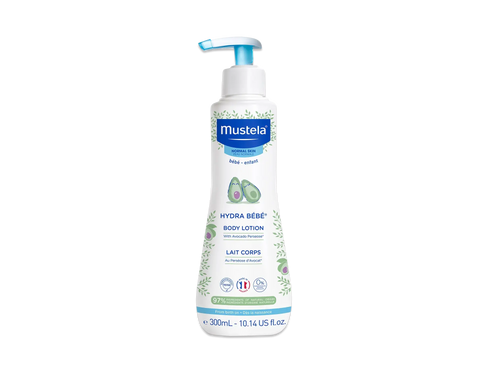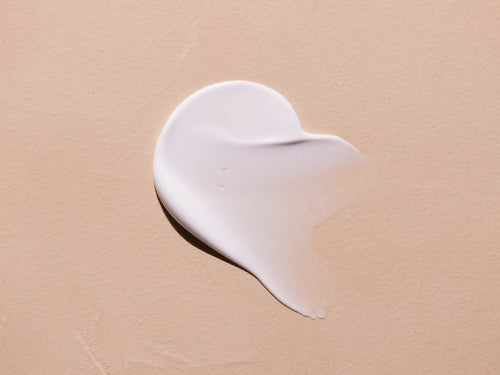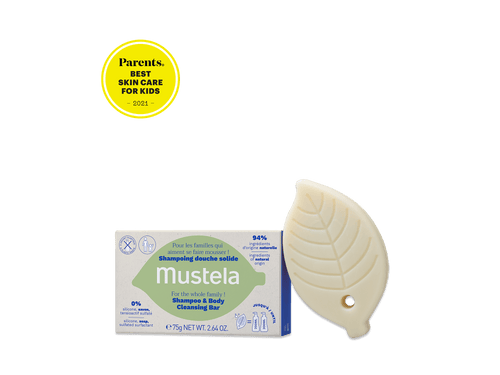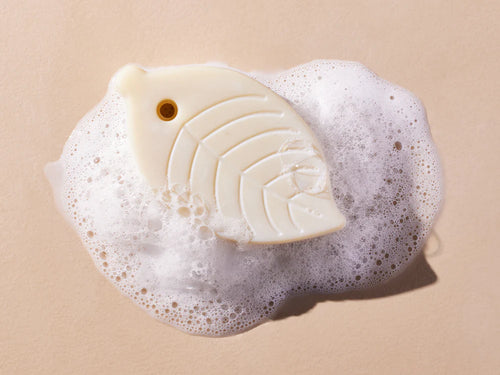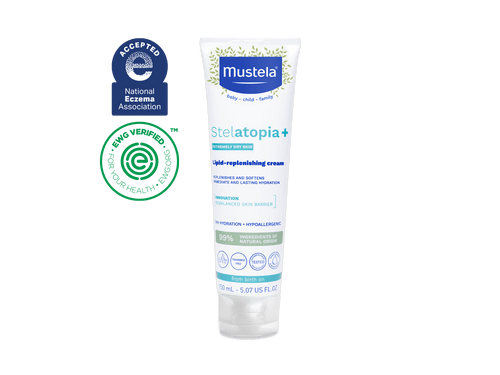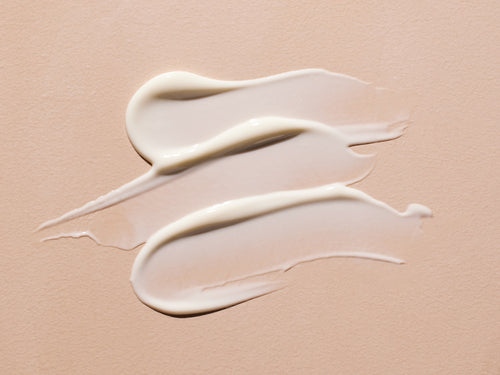In the middle of juggling diapers, onesies, and nap schedules, one of your biggest concerns when you have a new baby is nutrition. It’s completely understandable — you want your little one to grow and develop as they should.
The experts at Mustela are here to give you some tips on baby feeding so you can rest a little bit easier! Whether you’re breastfeeding or formula-feeding, you’ll find tips that apply to you and learn a couple of ways to take care of yourself as well.
12 Expert Baby Feeding Tips

1) Skip The Water And Juice
For the first several months of your baby’s life, don’t give them anything other than breastmilk or formula. That means no water and no juice.
As boring as this might sound, it’s all that your baby needs to grow and develop! Once your little one is around six months old, you can begin giving them small amounts of water or juice, but breastmilk or formula should still be their main beverage.
2) Find A Comfortable Breastfeeding Position

Babies eat frequently, meaning breastfeeding moms will spend a lot of time nursing their little ones! If that’s you, find the right breastfeeding position so you can be as comfortable as possible.
There’s no one right position — try various breastfeeding positions (like the cradle hold, crossover hold, or laid-back position) to see what works best for you and your baby. Don’t forget to use pillows as needed to support yourself.
It’s also important to alternate breasts throughout the day to ensure adequate milk supply in each breast. You can try switching breasts during your feeding or alternate between each feeding (just make a note to help you remember which breast to try for the next feed!).
Once you and your little one are in the right position, it’ll be easier for your baby to latch on correctly, which is important for more than one reason! That brings us to our next tip.
3) Help Your Baby Latch On Correctly
Making sure your baby latches on correctly helps them feed well and get enough milk. It can also save you from sore or cracked nipples.
While we hope our little ones will latch correctly by themselves, it doesn’t always go according to plan and might require a little bit of practice (and a lot of patience!).
Your baby might need a little guidance from you to get started. Touch their upper lip with your nipple so they open their mouth big and wide. Then bring their head to your breast (not your breast to their head) and put their chin to your breast first, followed by their mouth.
When your baby is latched correctly, you should feel comfortable and not experience any pain in your breasts or nipples. It’s not unusual to feel a stretching or tugging sensation at first, but if this continues, try readjusting your baby.
If baby is sucking deeply, you’re able to hear them swallowing, and their chin is pressed gently to your breast, you can be sure they’re correctly latched. Their bottom lip should be turned out over your nipple (not tucked in), and they should have the whole nipple in their mouth.
Your breasts should also feel softer after your little one has finished feeding, meaning your milk has been drained properly.
If you have to take your baby off for any reason, break the suction by gently pushing down on your skin near their mouth or inserting your finger into the corner of their mouth.
4) Take Care Of Your Physical Health

Motherhood can take a toll on you, and breastfeeding is not always a walk in the park! It’s crucial that you practice self-care during this time, and there are plenty of ways to do it.
The first step to caring for yourself applies whether you’re breastfeeding or bottle-feeding — stay hydrated! Keep a bottle of water with you whenever possible and try not to let yourself get thirsty, as this can mean you’re starting to become dehydrated.
In addition to staying hydrated, ensure you’re eating throughout the day (a difficult task when you’re so focused on your little one!) and try to get enough sleep.
It’s also important to take care of your skin by tending to your breasts. A little TLC will go a long way toward helping you feel good and care for your little one.
Look after your nipples (this is especially important if you have soreness or cracking!) by applying Mustela’s Nursing Comfort Balm.
This soothing nipple cream will ease discomfort and moisturize sensitized nipples. Plus, it’s environmentally friendly, made of 100% naturally derived ingredients, and safe for both you and your baby during prenatal and postpartum pregnancy.
Also, try Mustela’s Bust Firming Serum to nourish and hydrate your breasts, neck, and neckline. Safe to use while breastfeeding, this serum will tone your skin and give it a firmer look and feel!
5) Don’t Wait For Your Baby To Cry

Babies cry for several reasons, including wanting to eat! But crying is a late hunger cue — it’s a sign that they’re too hungry. If you wait until your little one cries to give them a bottle or nurse them, you may have a more difficult time calming them down.
Instead, be on the lookout for earlier signs of hunger, like rooting (opening their mouth and moving their head side-to-side), sucking on their fingers, or smacking their lips. That’s your cue to warm the bottle or settle in to nurse.
6) Monitor Diapers And Weight Gain

Your baby can’t yet verbalize if they’re full or not, so how can you know if they’re eating enough? Look for wet and dirty diapers as well as weight gain.
Wet And Dirty Diapers
For the first couple of days, your tiny baby won’t have many dirty diapers, but by the time they’re four or five days old, they should dirty a diaper two or three times per day.
The same principle applies to wet diapers. The first day or two, your little one may wet only two diapers, but that will increase over the next few days. By five days old, they’ll typically wet six or more diapers every day.
Around this time, your little one’s stools will change from the dark green-colored meconium that lines their intestines in the womb to the typical baby poo color, which is more of a mustard yellow.
Get into good diaper-changing habits from the beginning. Don’t leave your little one in a dirty diaper, clean their bottom with Cleansing Wipes, and care for their delicate skin with Mustela’s Liniment and Diaper Cream with Olive Oil and Aloe, both made with natural ingredients.
Weight Gain
When it comes to your baby’s weight, don’t be surprised if they lose a bit right at first. Babies usually drop several ounces over the first couple of weeks, but after that, they should gain five to eight ounces per week for the first several months.
Your pediatrician will check your baby’s weight when you go for a visit. If you have any concerns or questions about your little one’s weight gain or eating habits, don’t be afraid to ask.
7) Feed Your Baby Frequently
It might seem like all you do is feed your baby, change their diapers, and try to get a few precious minutes of sleep when you can. There’s a reason you feel that way — babies eat frequently during their first few months!
While their little tummy can only hold a teaspoon or so of liquid in their early days, their stomach will slowly stretch as they grow to allow for more food intake.
Although breast-fed babies tend to eat more often than bottle-fed babies due to breastmilk being quicker to digest, all newborns should eat between eight and 12 times in a day (24 hours) — at least every four hours. They may even eat as often as every one and a half or two hours!
But after the first month, the number and frequency of feedings will decrease as your baby grows older. Your little one will also become more efficient with feedings, so you may notice that the duration decreases from up to 20 minutes per breast to around 10 minutes per breast.
If you notice your baby is suddenly hungrier than usual, they may be going through a growth spurt! You can expect to experience a sudden increase in feeding frequency every two months or so up until your baby is six months old.
How can you know when your little one is all done with a feeding? Your baby should stop nursing when they’re ready and will be relaxed and content.
To be sure they’re finished, give them a little break and a burp, then offer the breast or bottle again.
8) Prepare The Right Amount Of Formula

While you’re still getting the hang of this parenthood thing, it can be difficult to know how much formula to prepare for a feeding.
Prepare too little and you’ll be trying to get a bottle ready with one hand while your baby cries. Prepare too much and you may have to throw out what you don’t use.
We recommend making two to three ounces of formula each time you feed your little one at first. As your baby grows, they’ll eat less frequently and need more formula at each feeding. Increase the amount of formula you make over time so that your baby is full and content after a feeding.
9) Don’t Introduce Solid Foods Too Early
Breast milk (or formula) is the best source of nutrients for your baby, and doctors recommend breastfeeding for at least the first six months of their life — up to one year if you can!
Regardless of how long you breastfeed, when your baby is around six months old, you can introduce solid foods. You’ll know they’re ready if they’re picking things up with their fingers, able to sit and hold their head up well, and don’t push food out of their mouth with their tongue.
Just remember: even once you’ve started offering solids to your baby, breastmilk or formula is still an essential part of their diet!
10) Stock Your Diaper Bag With Baby Feeding Essentials
Knowing that your baby will need to eat frequently, stock your diaper bag so that you have what you need when you’re out-and-about or traveling with your little one. Don’t get caught empty-handed!
Make sure you have a nursing cover, bottles, formula, bibs, and the like. That’s in addition to the other diaper bag essentials, like No Rinse Cleansing Water for easy clean-ups and a multi-purpose ointment like Cicastela Moisture Recovery Cream.
And don’t forget Mustela’s Bebe On The Go travel-friendly set for quick and easy hydration and clean-ups no matter where you are!
11) Burp Your Little One Regularly
Babies can easily swallow excess air while they’re feeding, which can lead to gas that needs to be burped out. But when it comes to burping your baby, it can take a few tries to find a position that works!
A common burping position is holding baby upright against your chest with their chin resting on your shoulder. Drape a burping cloth over your shoulder to catch any excess milk your little one might spit up, and then give them gentle pats on the back with a cupped hand.
If this position doesn’t offer your baby relief, sit them upright on your lap instead. Otherwise, your baby might be more comfortable laying belly down on your lap with a slightly raised head. Try gently rubbing your baby’s back in either of these positions to provide relief.
While it’s important to burp your baby after each feeding session, it’s also a good idea to stop feeding a couple of times during to see if they need to burp.
If you’re breastfeeding, try burping your little one in-between switching breasts. If you’re bottle-feeding your baby, attempt to burp them after every two to three ounces of fluid.
Your little one should settle after being fed and burped. If you notice that they’re regularly unsettled after being burped, consult your pediatrician to ensure there are no underlying issues, such as acid reflux, that might be bothering your baby.
12) Keep Up Your Milk Supply

Like we mentioned earlier, you’ll know your little one is getting enough milk by their weight gain and amount of dirty diapers. But if your baby is struggling? Could it be due to low milk supply?
There are many potential causes of low milk supply, including medical conditions such as diabetes, excess stress, certain medications, delayed start to breastfeeding, and not breastfeeding often enough.
You can make small, simple changes to try to increase your milk supply. By breastfeeding as soon as possible (preferably within an hour of your little one’s birth), you’re setting yourself up for feeding success.
Increasing baby’s feeds to include snacks between main meals is another way to improve your supply, as is alternating between each breast during feeds. Using a breast pump may also help to stimulate your milk supply.
And, as always, ensuring you’re well-hydrated, eating a well-balanced diet, reducing stress by making time for yourself, and making sure you’re getting plenty of sleep are all key to maintaining a healthy milk supply for your little one.
If you’ve tried the tips mentioned above and you’re still experiencing difficulties with breastfeeding and low milk supply, talk to your doctor or lactation consultant to see if there are medications or additional techniques to implement.
Common Feeding Issues And How To Solve Them

Cluster Feeding
In the early days of breastfeeding when you and your little one are still trying to find your groove, you might find that your baby begins to cluster feed. This is when your baby takes short feeds in quick succession, often eating multiple times over just a few hours.
While it’s normal to experience cluster feeding, it can be a difficult adjustment for new mothers. When you’re in the throes of cluster feeding, it can feel like there’s no end in sight. But don’t fret — it won’t last forever!
The best thing you can do to ride the wave of cluster feeding is to remember it’s completely normal and that you haven’t done anything wrong to cause it. Be gentle with yourself by practicing simple self-care and rest when you can.
Cluster feeding is only a concern if it becomes excessive. If the cluster feeding lasts more than a few days, consult your doctor to be sure your little one is happy, healthy, and gaining weight as they should.
Blocked Milk Ducts
If you’ve experienced blocked milk ducts, you know just how painful they can be! You might notice a small lump in your breast or a painful white spot on your nipple as the first sign of clogged ducts.
There are a few ways to clear a clogged milk duct. Start by having a hot shower and massaging your breast to break up the lump. Alternatively, try holding a warm compress to your breast before massaging.
Continue feeding your baby through the breast with the clogged duct if you can, as it can help to provide relief by unclogging the duct.
After your little one has finished feeding, try using a breast pump to drain excess milk and prevent potential clogs.
Mastitis
Mastitis is a painful condition of inflammation in the breast that can lead to infection. It usually begins with a simple clogged milk duct and is often accompanied by additional uncomfortable symptoms, such as a fever, fatigue, aching, swelling of the breast, and redness.
Like clogged milk ducts, mastitis can be caused by incorrect breastfeeding techniques and not fully draining your breasts after feeding sessions. It can also be caused by clogged ducts that aren’t treated swiftly enough.
It’s important to seek treatment for mastitis as soon as you begin to notice symptoms. Your doctor will likely prescribe antibiotics to help clear the infection — these are completely safe to take during breastfeeding.
Try to continue breastfeeding despite the mastitis to prevent further clogged ducts or abscesses from forming. Reducing feeds during this time can worsen the condition and prolong your recovery time, so try to keep your routine as much as possible to promote healing.
Nurture Your Newborn And Care For Yourself

Caring for a newborn can feel overwhelming, but keeping them well-fed doesn’t have to be complicated and is a great opportunity to bond with your little one.
With our baby feeding tips, regularly scheduled visits to the pediatrician, and lots of love and TLC, your baby will be full, healthy, and happy.
Don’t forget to care for yourself in the meantime so you can give the best possible care to your little one. Keep Mustela’s Bust Firming Serum and Nursing Comfort Balm on hand so you can continue nursing your tiny one as long as you want!



